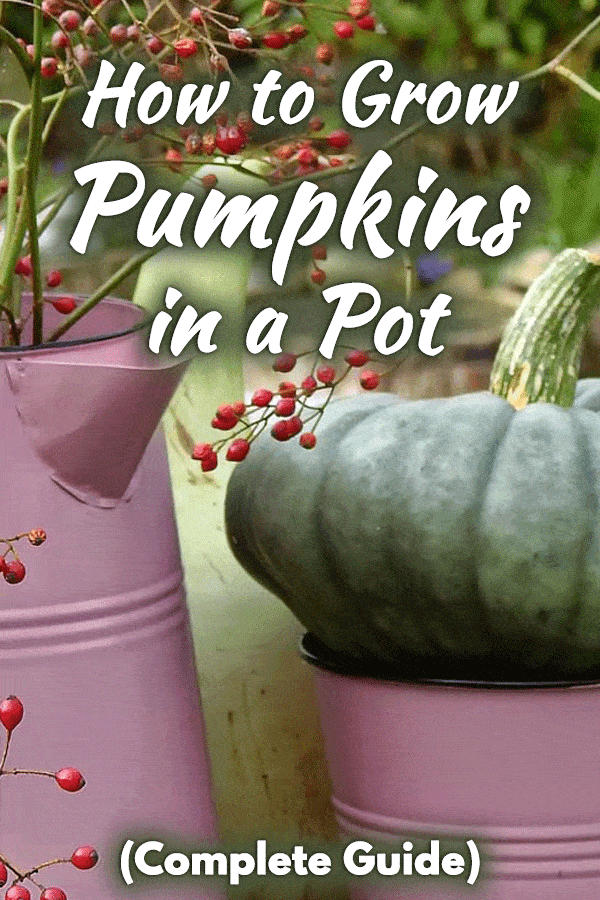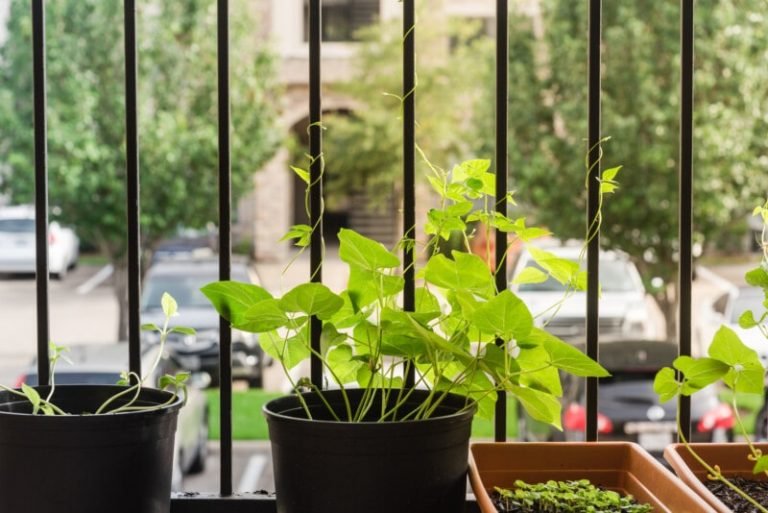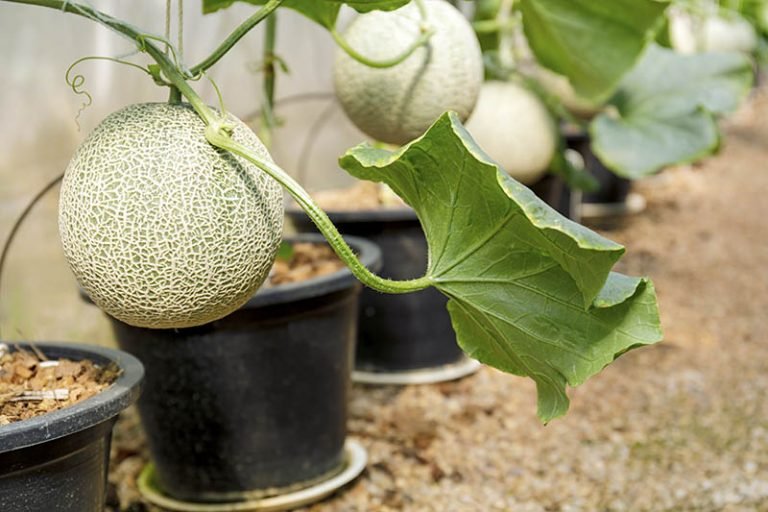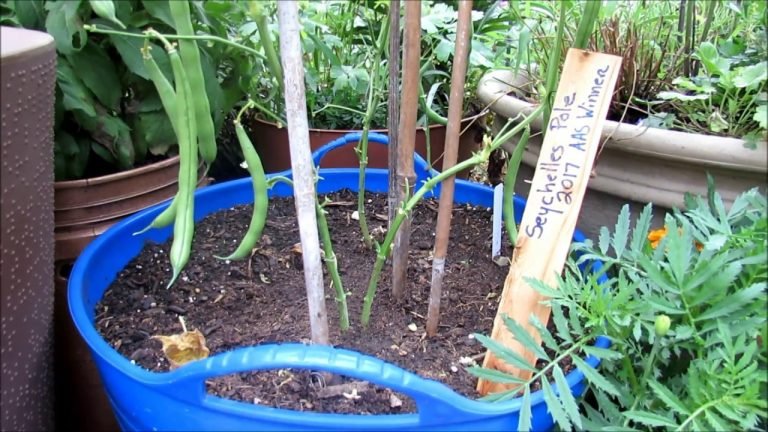how to grow pumpkins in a pot – [Beginners Guide]
Hey there! Are you looking for a fun and easy way to grow your own pumpkins at home? Look no further than growing them in pots! I’ve personally grown pumpkins in pots for the past few years and it’s been a great experience. Not only is it a fun activity to do with the kids, but it also provides you with fresh and delicious pumpkins for pies, soups, and more.
One of the best things about growing pumpkins in pots is the flexibility it offers. You can easily move the pots around to ensure that your pumpkins are getting the right amount of sunlight and water. And, if you live in a small space, you won’t have to worry about taking up a large area of your yard for a pumpkin patch. With just a few pots, you can have your very own pumpkin patch on your balcony or patio.
Another great thing about growing pumpkins in pots is that it’s relatively low maintenance. You can grow them in a pot of at least 20-gallon size. And, since pumpkins are a vine plant, you’ll need to provide them with a support structure, such as a trellis or a fence. But, other than that, all you’ll need to do is water and fertilize your pumpkins regularly and watch them grow!
So, if you’re looking for a fun and easy way to grow your own pumpkins at home, give growing them in pots a try. You won’t be disappointed!
Pot or container selection
When it comes to growing pumpkins at home in pots, the size and construction of the pot is very important for optimal growth. You will need a pot that is at least 20 gallons in size. This will provide enough room for the pumpkin’s root system to grow and for the pumpkin itself to mature.
In terms of pot construction, it’s best to use a pot made out of a sturdy material such as terra cotta or plastic. Avoid using metal pots as they can become too hot in the sun and harm the roots of the pumpkin plant. Also, make sure the pot has good drainage holes at the bottom to prevent waterlogging, which can lead to root rot.
Additionally, it is important to choose a pot with a wider base, as it will provide more stability for the pumpkin plant as it grows and spreads its vines. A pot with a diameter of at least 18 inches will be suitable for a single pumpkin plant.
In summary, when growing pumpkins in pots at home, you’ll need a pot that is at least 20 gallons in size, made out of a sturdy material like terra cotta or plastic, has good drainage holes, and has a wider base for stability. With the right pot and proper care, you’ll be able to grow healthy and delicious pumpkins at home!
Make suitable soil mix
Pumpkins require well-draining soil with a pH between 6 and 7. A good soil mix for growing pumpkins at home can be made by mixing equal parts of garden soil, compost, and sand. This mixture will provide the necessary drainage and nutrients for optimal growth.
It is also important to ensure that the soil contains adequate amounts of essential nutrients such as nitrogen, phosphorus, and potassium. A soil test can be conducted to determine the specific nutrient needs of the soil. Then, using a balanced fertilizer, such as a 10-10-10, can be applied to meet those needs.
It’s important to note that pumpkins have a deep root system and require a lot of space. They should be planted in a location that receives full sun and have enough room to spread out.
In summary, a well-draining soil mix made of equal parts garden soil, compost, and sand with a pH between 6 and 7 and adequate amounts of essential nutrients such as nitrogen, phosphorus, and potassium is needed for optimal growth of pumpkins at home.
How to plant the pumpkins?
Growing pumpkins in pots at home is a great option for those with limited space. Here is a step-by-step guide to planting pumpkins in a pot:
- Choose a large, deep pot that is at least 12 inches in diameter and 18 inches deep. Make sure the pot has drainage holes.
- Fill the pot with a well-draining soil mix made of equal parts garden soil, compost, and sand. The soil should have a pH between 6 and 7.
- Choose a pumpkin seedling or seed and plant it in the center of the pot. If using a seedling, plant it at the same depth as it was in its original container. If using a seed, plant it about 1 inch deep.
- Water the soil well, making sure to keep it consistently moist but not waterlogged.
- Place the pot in an area that receives full sun.
- As the pumpkin plant grows, provide support as necessary, such as a trellis or stake.
- Fertilize the plant regularly with a balanced fertilizer, such as a 10-10-10, according to the soil test results and the specific needs of the plant.
It’s important to note that pumpkins have a deep root system and require a lot of space. They should be planted in a location that receives full sun and have enough room to spread out. Also, pumpkins take about 90 days to mature, so be sure to plan accordingly.
In summary, growing pumpkins in pots at home is a great option for those with limited space. By following this step-by-step guide, you will ensure that your pumpkin has the necessary soil, sunlight, and support to thrive.
How to care for pumpkins?
Watering Requirement
Pumpkins require consistent moisture to grow and develop properly. The soil should be kept consistently moist, but not waterlogged. A good rule of thumb is to water the soil whenever the top inch of soil feels dry to the touch. Water the soil deeply, making sure to saturate the entire root zone. It is also important to note that pumpkins have a deep root system, so make sure to water the soil to a depth of at least 12 inches.
Fertilizer Requirement
To ensure optimal growth, pumpkins require a steady supply of essential nutrients such as nitrogen, phosphorus, and potassium. A soil test can be conducted to determine the specific nutrient needs of the soil. Then, using a balanced fertilizer, such as a 10-10-10, can be applied to meet those needs. Fertilize the plant regularly according to the soil test results and the specific needs of the plant.
Sunlight Needs
Pumpkins require full sun to grow and develop properly. They should be planted in a location that receives at least 6 hours of direct sunlight per day. If the pot is not getting enough sunlight, move it to a sunnier location.
Pruning & Training
Pumpkins have a vining growth habit and can quickly take over a small space. To keep the plant under control, pinch off the tips of the vines when they reach the desired length. This will encourage the plant to branch out and produce more fruit. As the pumpkin plant grows, provide support as necessary, such as a trellis or stake.
Other Care
- Monitor the plant for pests and diseases, and address any issues promptly.
- Keep an eye out for any yellowing leaves or other signs of stress, which can indicate a lack of water, nutrients, or sunlight.
In summary, growing pumpkins in pots at home requires consistent moisture, fertilization, full sun, pruning and training, and monitoring for pests and diseases. By providing these essential care elements, you will ensure that your pumpkin has the necessary support to grow and thrive.
Common problems
Pests
Pumpkins grown in pots at home can be susceptible to pests such as aphids, cucumber beetles, and squash bugs. These pests can cause damage to the leaves and fruit, and can also spread diseases. To prevent pest infestations, it is important to regularly inspect the plant for signs of damage and address any issues promptly. You can also use insecticidal soap or neem oil to deter pests and protect the plant.
Diseases
Pumpkins grown in pots at home can also be susceptible to diseases such as powdery mildew, downy mildew, and cucurbit wilt. These diseases can cause damage to the leaves, stems, and fruit, and can also reduce the overall yield. To prevent disease, it is important to provide proper care and maintenance for the plant, such as proper watering and fertilization. It is also important to avoid overhead watering and to give the plants space to air out to prevent fungal growth.
Poor Production
Poor production can be caused by a number of factors, including inadequate sunlight, poor soil quality, lack of fertilization, and poor pollination. Make sure that the pumpkin plant is getting at least 6 hours of direct sunlight per day, and that the soil is of good quality and properly fertilized. Pollination can also be an issue when grown in pots, so you can help hand pollination by using a small paintbrush to transfer pollen from the male flowers to the female flowers.
Other issues
- Overwatering or under watering can lead to root rot or other issues that can harm the plant.
- Overcrowding can lead to reduced growth, poor air circulation, and other issues.
- Insufficient light can lead to spindly plants and reduced yields.
In summary, pumpkins grown in pots at home can face issues such as pests, diseases, poor production, and other issues such as overwatering, overcrowding, and insufficient light. By being aware of these potential problems and taking steps to prevent them, you can ensure that your pumpkin plant grows and produces well.
Harvesting & storing homegrown pumpkins
Harvesting
Pumpkins are typically ready for harvesting when the skin is hard and the stem is dry and brown. The pumpkin should also be fully colored, with no green or yellow spots remaining. To harvest, use a sharp knife or pruner to cut the stem, leaving a few inches of stem attached to the pumpkin. Gently lift the pumpkin from the vine and handle it with care as the stem may be brittle.
Storing
Pumpkins can be stored for several months if they are properly cured and stored. To cure the pumpkins, leave them in a warm, sunny location for 1-2 weeks. This will harden the skin and improve the storage life of the pumpkin. After curing, store the pumpkin in a cool, dry place, such as a basement or garage, with a temperature between 50-55°F. Avoid storing pumpkins in a damp or humid area, as this can lead to rot.
How to know when they are ready for harvesting?
- The pumpkin skin should be hard and difficult to puncture with a fingernail
- The stem should be dry and brown, not green or moist
- The pumpkin should be fully colored, with no green or yellow spots remaining.
- The size of the pumpkin should be as desired and at maturity
In summary, pumpkins are ready for harvesting when the skin is hard, stem is dry and brown, the pumpkin is fully colored, and the size of the pumpkin is as desired. Proper curing and storing will help ensure that the pumpkin stays fresh and lasts for several months.
Growing pumpkins in container – Conclusion
Conclusion
Growing pumpkins in a pot at home is a fun and rewarding experience. With the right soil mix, proper planting, and regular care and maintenance, you can have a bountiful harvest of pumpkins. It’s a great way to enjoy the taste of fresh pumpkins, and it can be a fun activity to do with your family or friends.
To summarize, here are the key takeaways from this guide:
- Use a well-draining, nutrient-rich soil mix for planting pumpkins in a pot.
- Provide plenty of sunlight and water regularly to keep the soil consistently moist
- Fertilize the pumpkins regularly to ensure optimal growth.
- Regularly check for pests and diseases to prevent them from affecting your pumpkin plants
- Harvest the pumpkins when they are ready by checking for the right color, size and the stem is dry and brown.
- Cure and store your pumpkins properly to enjoy them for several months.
By following these tips, you will have a great chance of growing healthy and delicious pumpkins in a pot at home. So, give it a try and enjoy the taste of fresh, homegrown pumpkins.








